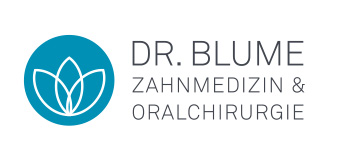Cysts
A cyst is a cavity lined with skin or mucous membrane and filled with fluid. A cyst can grow at different rates and displace or weaken surrounding tissue, so any cystic change should be medically examined and treated if necessary. In the area of the mouth and jaw a multitude of cystic changes of very different origin can occur.
Cysts generally grow inconspicuously and do not cause any discomfort. The diagnosis is often made by chance during an X-ray examination. Only in the case of very large cysts do these become noticeable in the form of growing, pain-free swellings in the oral cavity or in the face.
Where do cysts in the jaw area come from?
Due to the large number of different cysts, these were classified into several subgroups by the WHO in 1992. Here a distinction is made between which tissue, at which location or at which time a cyst develops. Cysts can develop during development or as a reaction to an external stimulus. An exact statement as to which cyst is involved in detail can only be made if the tissue is examined under the microscope. For this reason, we send every tissue sample to the Department of Pathology at the University of Mainz.
How often do cysts occur?
Cysts of the jaw occur relatively frequently, mostly in middle age and especially in men. The upper jaw is statistically more often affected. The most common cyst form is the radicular cyst, which can develop as a result of inflammation of the dental nerve. The radicular cyst, for example, is one of the main reasons why a root tip resection must be performed. Small cysts of the salivary glands often appear in the soft tissue such as the tongue and lips, which appear as round and glassy swellings.
How are cysts in the mouth and jaw area treated?
Before each treatment, we carry out a thorough examination of the affected area to determine the best individual therapy for you. In the case of cysts in the area of the bony jaw, we prepare an exact X-ray analysis. In special cases, e.g. when the cyst is located close to important anatomical structures and nerves, it is advisable to take a 3D X-ray in advance for safe treatment.
In almost all cases the cysts can be removed very gently, we are specialized in this.
If you have any questions regarding the topic, therapy options or our methods, please do not hesitate to contact us.
What therapy options are available?
In the case of a pure inflammation, drug treatment already leads to recovery, while salivary stones should be removed by a small oral surgical procedure. This treatment is usually carried out under local anaesthesia at your dental practice in Mainz, Germany (Dr. Maximilian Blume). In a few cases, if the glandular tissue is severely damaged or a tumour is the cause of the disease, the salivary gland must be completely removed.
We are happy to help you to make a thorough diagnosis and sustainable therapy for your oral health.
Contact
DR. BLUME
ZAHNMEDIZIN & ORALCHIRURGIE
Erthalstraße 1
55118 Mainz
T (06131) 67 81 81
F (06131) 67 81 83
E-Mail: info@zahnmedizin-blume.de
OPENING TIMES
| Mon | 8am - 1pm and 2pm - 6pm |
|---|---|
| Tue | 8am - 1pm and 2pm - 6pm |
| We | 8am-1pm |
| Thu | 8am - 1pm and 2pm - 6pm |
| Fri | 8am-1pm |
PHONE HOURS
| Mon | 8:30am-12pm and 3pm-5:30pm |
|---|---|
| Tue | 8:30-12 and 3pm-5:30pm |
| Wed | 8:30am-12pm |
| Thu | 8:30am-12pm and 3pm-5:30pm |
| Fri | 8:30am-12pm |
